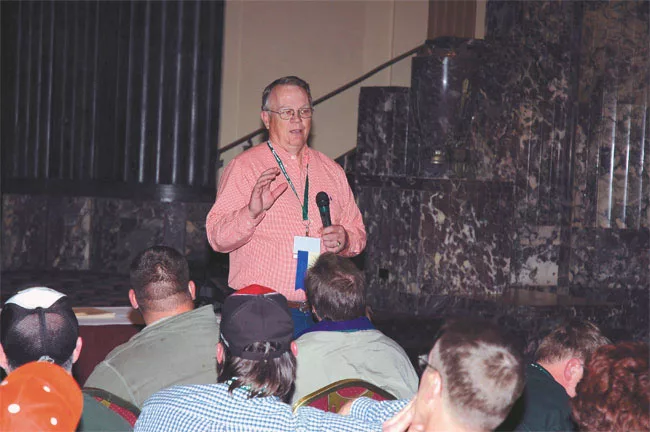American Farriers Journal
American Farriers Journal is the “hands-on” magazine for professional farriers, equine veterinarians and horse care product and service buyers.

Micheal Steward, DVM, shown here during a roundtable session at the 2008 International Hoof-Care Summit, believes equine veterinary clinics can benefit from putting on various forms of “Farrier Days.” He says the regular events he’s scheduled at Shawnee Animal Hospital in Shawnee, Okla., have not only improved farrier-veterinarian relationships, but have also been economically profitable.
Knowledge of the biomechanics and function of the equine foot has increased in recent years. A variety of technological advances have allowed veterinarians and farriers to measure the stresses and forces placed on and within the foot. This allows the veterinarian and farrier to apply shoeing methods using credible information. The expanding list of materials and shoe designs require knowledge and experience to implement a shoeing system properly.
Better-educated clientele require the joint knowledge and experience between the veterinary and farrier professions to treat lameness problems. A veterinarian may prescribe a shoeing protocol for a hoof condition, but not have an adequate knowledge of a farrier’s obstacles in applying the type of shoeing recommended for a particular hoof. Farriers may find many hoof capsule deformations, but can’t properly shoe the foot without the aid of radiographs.
Mutual respect and cooperation between these two professions will ultimately promote the well-being of the horse.
Communication can be challenging between farriers and veterinarians. Diverse educational backgrounds in both professions may lead to differences of opinion, approach and protocol. Lack of direct communication often leads to misunderstandings, with the horse owner trying to relay complicated information from one party…